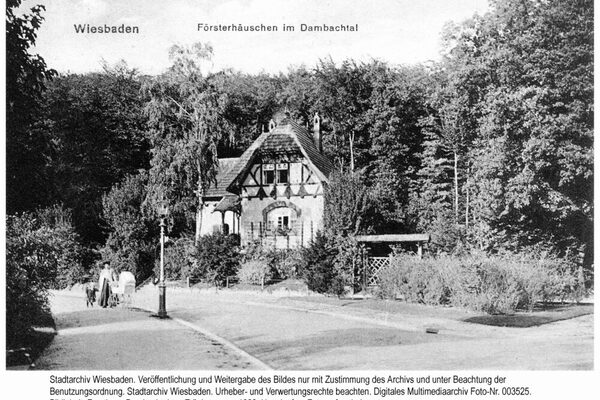Dambachtal facility
The Dambachtal park is nestled between the end of the street of the same name and Tränkweg along Freseniusstrasse and was created in 1898. The park is an outstanding example of the art of garden design at the end of the 19th century and was created by master builder Felix Genzmer.
The special feature of the complex lies in the smooth transitions between the public park, which ends directly in the urban forest without a visual boundary, the garden and the built-up area. A curved path and road layout due to the topography supports the impression of a natural setting. In the lower part of the narrow grounds, the enclosures of the properties on Kapellenstraße form a picturesque setting. In keeping with the tradition of park staffages, which can also be found in the Kurpark, the Remigius Fresenius Monument, which is slightly offset from the line of sight, is passed at the southern entrance. At the end of the Dambach Valley is a stone bench erected in 1909 in memory of the Kommerzienrat Franz Kupferberg. The Alfred Schulte hut, built in 1936 on the other side of the watering path at the edge of the forest, is visually connected to the park. The Dambachtal forester's lodge is also located there. For several years now, the green areas in the Dambachtal grounds have been developed into species-rich flower meadows.
Literature
Sigrid Russ, editor, Denkmaltopographie Bundesrepublik Deutschland. Cultural monuments in Hesse. Wiesbaden II - The villa areas. Edited by: Landesamt für Denkmalpflege Hessen, 2nd revised edition, Stuttgart 1996.
Schabe, Peter: Felix Genzmer - Architect of Late Historicism in Wiesbaden. Early creative years 1881-1903. Wiesbaden 1997 (Publications of the Historical Commission for Nassau 62).
